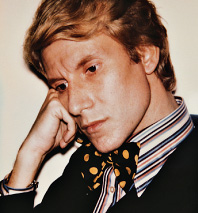
Fashion writers have been busy this week churning out Yves Saint Laurent encomiums, finding new ways to say “revolutionary genius” (and “addict” and “exhausted”). All true; he changed the way we dress. But the interesting thing is how he did it. Beyond the trim, perfect pantsuits and the witty, infinitely knock-off-able Mondrian dresses and the couture collections that were simultaneously impossibly rich and lighter than air, he and his partner, Pierre Bergé, did something more profound: They created the first dangerous luxury brand.
In 1978, when YSL launched Opium in the U.S., I was in high school and already wearing Rive Gauche for Men—very sporty and gender-neutral, packaged in a nifty blue, black, and silver metal can with the beautiful interlaced YSL logo. It looked like something I’d have in my bag while yachting on the Mediterranean, something I knew lay in my future (and for which I’d be wearing a Rive Gauche safari jacket and giant tinted sunglasses). But Opium, with its dark, implicitly kinky ad campaign shot by Helmut Newton, was a whole new level of sophistication. It cut every other flowery, candy-coated perfume off at the knees. It scared people. It got picketed (by Chinese and religious groups), and banned (in Australia), and I had to have it, for many of the same reasons my mother didn’t want to buy it for me. But she did. Opium was a blockbuster business immediately (the press around the launch party, held on a Chinese bark and featuring 5,000 cattleya orchids, helped).
There were other YSL forays to the dark side. His forties-inspired collection evoked the austerity of the war. He called his midi-skirt “degenerate, decadent, somewhat Proustian.” Ennui and kink, he discovered, were very marketable, as long as they were backed up with perfect tailoring and worn by his devoted pack of hedonistic, panther-sleek supporters (Betty Catroux, Loulou de la Falaise, Paloma Picasso, Bianca Jagger, Nan Kempner). With Rive Gauche, he made beautiful clothes cheap(er). Many other designers—Calvin Klein, John Galliano, Marc Jacobs, Alexander McQueen—have learned from these insights, imitated them. Perpetually exhausted, a Proust-quoting drug addict, Saint Laurent turned out to be his own best commodity.
Have good intel? Send tips to intel@nymag.com.